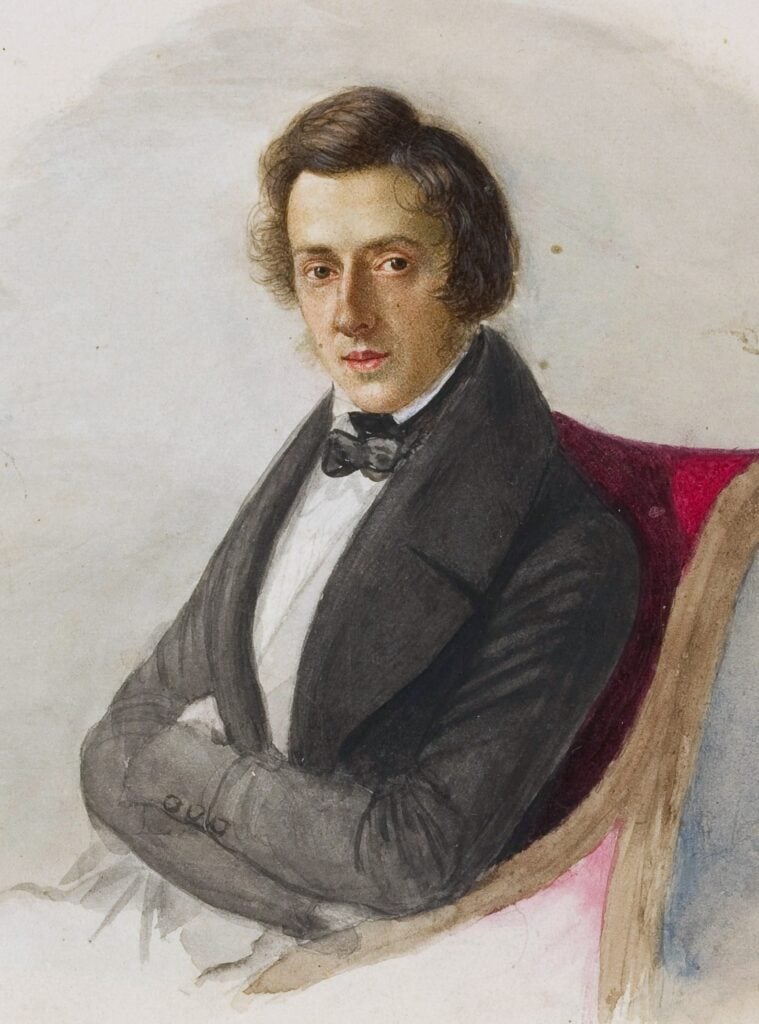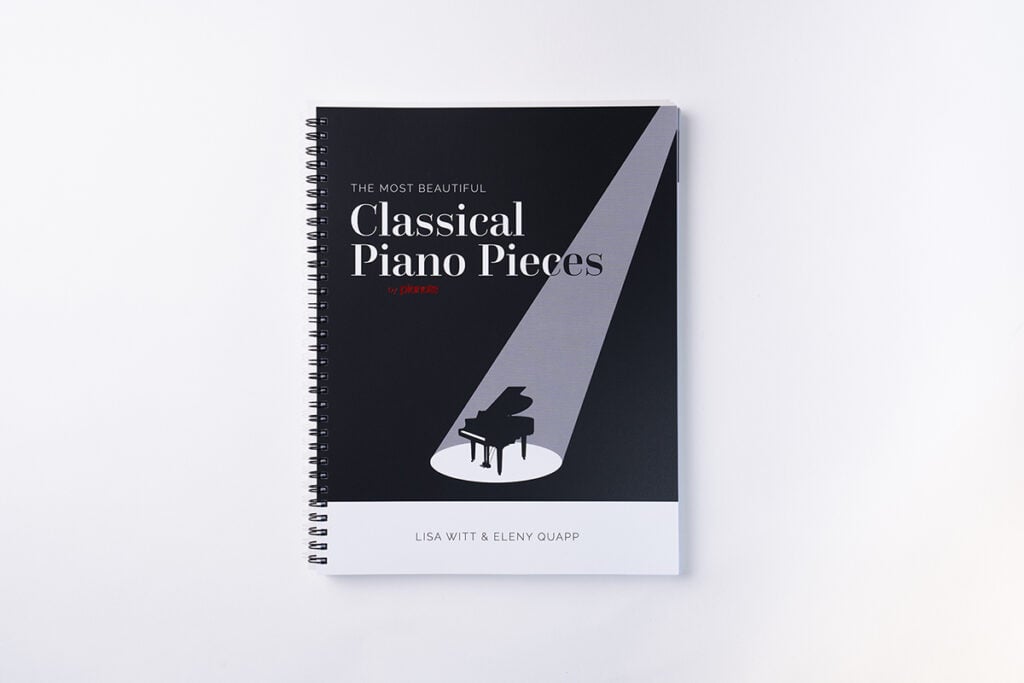The Nocturne in E-Flat Major, Op. 9 No. 2 is one of Frédéric Chopin’s most beloved pieces. It’s beautiful, and it’s inspired a lot of people to play piano!
If that’s you and you want to learn to play Nocturne in E-Flat Major, you’ve come to the right place! Now, this is not an easy song. But we’ve created a more accessible, easier version for intermediate piano players. You can use this version as a stepping-stone to the more advanced original.
Table of Contents:
Subscribe to The Note for exclusive interviews, fascinating articles, and inspiring lessons delivered straight to your inbox. Unsubscribe at any time.
This is the arrangement we use in our video lesson. It is shorter than the original and omits some of the more challenging parts of the original. Download it here:
> Nocturne in E-Flat Major Simplified Arrangement
If the simplified arrangement is still a little too challenging right now, we’ve got you covered! Here’s a beginner-friendly arrangement that’s just as beautiful:
> Nocturne in E-Flat Major Beginner Arrangement
Here’s the original sheet music taken from our Most Beautiful Classical Piano Pieces book, complete with some extra tips!
> Nocturne in E-Flat Major Original Sheet Music by Chopin
This piece is written in E-flat major and the time signature is 12/8.
So, we have three consistent flats: B♭, E♭, and A♭. But watch out for accidentals—there are quite a few!
12/8 means there are 12 beats per measure, and an eighth note is worth one beat. You’ll notice that Chopin groups his eighth notes in threes. This gives the piece a waltzy feel.
Bach is an astronomer, discovering the most marvellous stars. Beethoven challenges the universe. I only try to express the soul and the heart of man.
Frédéric Chopin (source)

Chopin’s melodies are sweet and beautiful, and the best way to bring out this sweetness is to pretend you’re singing the melody yourself. Think of the phrases as musical “sentences” you’re singing with one breath.

The left hand can look intimidating, but see if you can spot chord shapes. This can help making the reading process faster.

Memorizing the left hand is worth the time because then you can focus on phrasing and trickier fingering in the right hand. Having a solid left hand will help with this piece—it works as a “time-keeper” to keep you anchored to that waltzy rhythm.
Be prepared for upcoming finger gymnastics! There are several octave stretches in the melody, so looking ahead on occasion to see what’s coming up can help your hands prepare.
We can break down the scary parts into their essential elements and suddenly they’re not that scary at all!
For example, take a look at this fancy-looking figure with tons of accidentals. Look closely at the downbeat notes and the notes that lead towards them. You’ll see that this complex-looking group of notes is, essentially, an arpeggiated C major triad connected by half-step approach tones.

Start slow, write down your fingering, and trust your fingers. The more you practice, the more muscle memory you’ll build, and soon you’ll be able to play these tricky parts without thinking.
As a Pianote+ Member, you’ll get access to our 10-step Method, song library, and growing community of piano players just like you. Plus: get coached by world-class pianists who have played with rock stars.
A nocturne is a piece that is inspired by or evokes the night. Chopin is perhaps the most famous nocturne composer, having penned 21 himself. But other composers who wrote nocturnes include Debussy, Mendelssohn, and Rachmaninoff. Other famous Chopin nocturnes include the Nocturne in C-Sharp Minor, Op. posth. and the Nocturne in E Minor, Op. posth. 72 No. 1.
Frédéric Chopin (1810-1849) was half-French and half-Polish. Born in Poland, he lived in Paris, France for most of his life where he mingled with like-minded artists like Franz Liszt and Eugene Delacroix. He was famously involved with the author Aurore Dudevant, known as George Sand. Unfortunately, Chopin suffered from poor health and he passed away in 1849 at age 39.
Chopin was unique for having focused almost solely on the piano. You can recognize a Chopin piece by its chromaticism, polyrhythms, folk influences, and singable, beautiful melodies.
Chopin pieces can be difficult, but there are a few Chopin pieces that are accessible to beginner-intermediate pianists. Check out these:
Want all these pieces—and more—in one beautifully designed book with expert tips? Check out our latest release, The Most Beautiful Classical Piano Pieces.

Lisa Witt has been teaching piano for more than 20 years and in that time has helped hundreds of students learn to play the songs they love. Lisa received classical piano training through the Royal Conservatory of Music, but she has since embraced popular music and playing by ear in order to accompany herself and others. Learn more about Lisa.
/marketing/pianote/promos/april/banner-bg-m.webp)
We use cookies for traffic data and advertising. Cookie Policy »
/marketing/pianote/promos/april/banner-title.webp)